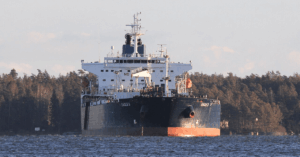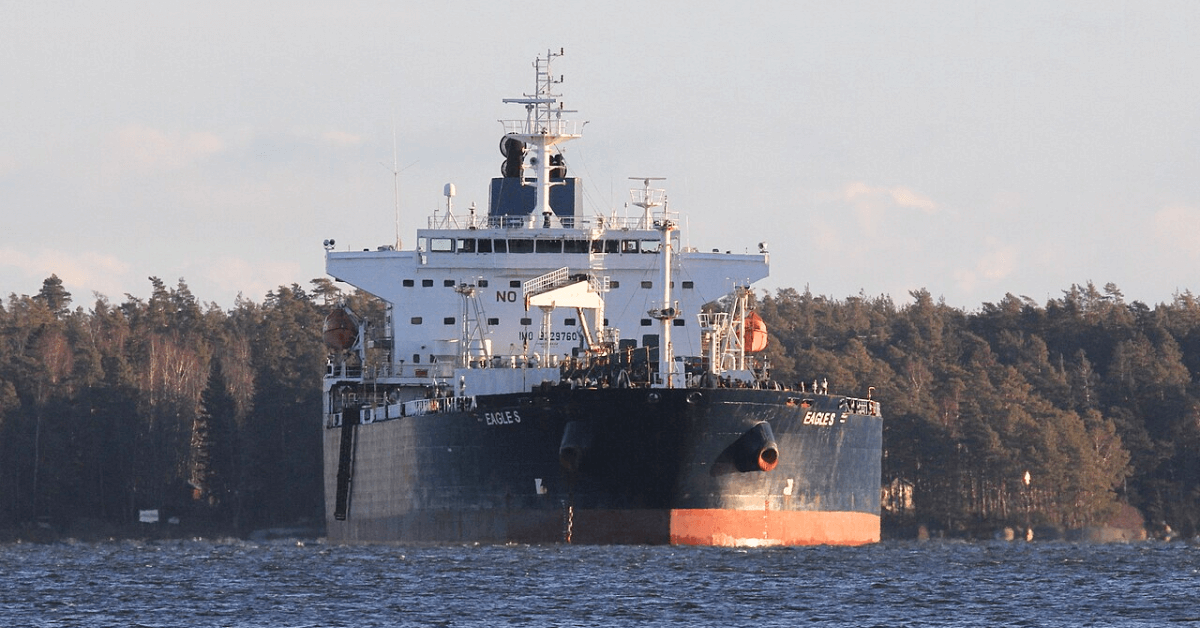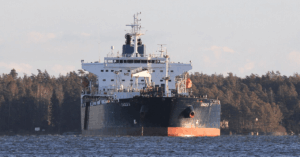
In A Legal First, Six Italian Activists To Stand Trial For Migrant Sea Rescue
May 30, 2025
US Coast Guard Offloads Over 28,500 Pounds Of Cocaine At Port Everglades
May 30, 2025

A nearly six-month-long criminal investigation into the damage of the Estlink2 electricity cable between Finland and Estonia is now close to completion, Finnish authorities confirmed.
The subsea cable, which is critical for cross-border electricity transmission, was damaged on December 25, 2024. Investigators believe the Cook Islands-flagged tanker Eagle S dragged its anchor over the seabed, causing extensive damage to both electricity and data cables.
The Finnish National Bureau of Investigation (KRP) initially identified nine suspects among the ship’s crew. Later, five individuals were cleared and released with the vessel, while three crew members, from Georgia and India, remained in Finland under suspicion.
Authorities said the final investigation report will soon be handed over to prosecutors for review.
The Eagle S, a 74,000-deadweight-tonne crude oil tanker built in 2006, was part of Russia’s so-called “shadow fleet” used to bypass European Union sanctions. After the incident, the vessel was inspected and found to have 32 deficiencies.
Finnish police stated that the ship had left Russia a few days before the cable damage occurred. The anchor, believed to have caused the damage, was found on the seabed and later recovered on January 6.
The tanker was seized in Finland, but authorities eventually released it on March 2 after safety deficiencies were addressed in coordination with the Cook Islands flag state, the classification society, and the crew.
The reason for its release was due to the high costs involved in keeping the vessel under arrest, which reportedly included a €1 million arrest guarantee and monthly expenses in the hundreds of thousands of euros.
Legal experts pointed out that selling the ship during ongoing litigation would have been extremely difficult, possibly resulting in losses greater than the ship’s value.
Meanwhile, Finland’s national grid operator Fingrid and Estonia’s system operator Elering are moving ahead with urgent repair work on the damaged cable. The repair cost is expected to be between €50 million and €60 million, with both countries agreeing to split the bill. This cost estimate does not include the financial losses from the electricity that could not be transmitted while the cable was offline.
Nexans, the cable manufacturer, was contracted to carry out the repairs. Preparatory work between February and April involved lifting the damaged cable from the seabed, cutting it out, and conducting insulation tests to ensure the rest of the cable remained functional. Spare cable and repair joints had been manufactured in advance to speed up the repair process.
Actual repair operations began on May 18 in the Gulf of Finland using the vessel Deep Cygnus. According to Fingrid’s Head of Submarine Cable Operations Kimmo Nepola, around one kilometer of the heavy cable, weighing 80 kg per metre, needs to be replaced. He said a 15–20 metre section will be manually assembled to connect the old cable to the spare segment, a task described as “extremely demanding and time-consuming.”
Nepola reported that although weather conditions have been favorable, busy vessel traffic in the Gulf has added to the complexity of the work. An updated timeline for completion is expected in June. However, Fingrid aims to restore the Estlink2 cable to operational status by mid-July. Once restored, the repaired cable is expected to function reliably for the next 40 years.
The Estlink2 cable, which became commercially operational in February 2014, is the second high-voltage direct current (HVDC) link between Finland and Estonia after Estlink1, which was completed in 2006.
Estlink2 spans a total of 170 kilometers, 145 km of which runs undersea and supports a power transmission capacity of 650 megawatts. A previous fault on the cable on January 26, 2024, was repaired by August 31 at a cost exceeding €30 million.
Fingrid and Elering decided to use a modified general-purpose construction vessel for the repair work, avoiding delays that would have come with waiting for a specialised cable-laying ship. According to officials, the decision was taken to prevent delays that might have postponed the repairs until the end of the year.
Finnish and Estonian system operators are also reportedly planning to sue the ship’s owner, Dubai-based Caravella LLC-FZ, for damages. Legal experts say the court process could last five to six years, forcing the operators to initially cover repair costs themselves to ensure fast restoration of services.
References: helsinkitimes, submarinenetworks
Source: Maritime Shipping News


